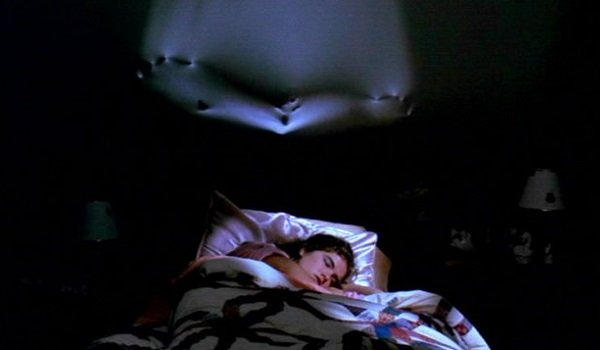In this set of blogs, we’ll be looking into some classic horror films that left an undeniable mark on the history of the genre, from The Birds (1963) to The Witch (2016). While not all of them remain the pinnacle of fright in today’s day and age– with some turning from terrifying to amusingly lackluster– they are all household names when it comes to horror, with influence in popular culture ranging from cameos in video games to the creation of massive and ongoing franchises.
The first film we’ll be looking at is A Nightmare on Elm Street (1984), featuring the (literally) nightmarish murderer Freddy Krueger as he travels through dreams to choose and attack his victims. This film was directed by Wes Craven and features Robert Englund as the mass murderer, alongside Heather Langenkamp, an at-the-time new face who plays the classic “final girl” and heroine Nancy. Elm Street was immensely popular upon release, and has remained a horror classic, sparking the creation of 8 other sequels, prequels, and spinoffs– one of which also features Jason, from the iconic Friday the 13th franchise!
The concept of a murderer who kills through dreams was primarily inspired by a single incident. A young boy who had escaped the trauma of the Cambodian Genocide was reported to have started screaming in his sleep one night, but when his parents checked on him, he was already dead– the boy had died suddenly during his nightmare. Craven read a subsequent report about the death in the LA Times, and was fascinated by the concept of death during sleep. There is certainly something to be said about the inherent horror in the vulnerability of sleep, as can be seen in the numerous other horror films made on the subject of nightmares or sleep paralysis.
Though certain aspects of the practical effects in this movie are somewhat laughable by today’s standards, other scenes are remarkably ingenious. In one scene, Krueger’s victim is dragged across the walls and ceiling, held up by an invisible hand as she is murdered– the effect is made via the creation of a rotating room. In another, a separate victim– played by Johnny Depp, surprisingly– is pulled into his bed, which then gushes a truly impressive amount of blood straight into the air and onto the ceiling. Similarly, the film crew simply created an  upside-down version of the room, created a large amount of fake blood, put a hole in the bed, and let loose the waterworks. Perhaps the most infamous example of practical effects, however, occurs as Krueger stalks Nancy in her sleep; the seemingly normal wall distorts, and he seems to try to push through it, leaning over his unaware victim as he infiltrates her dreams. Jim Doyle, the special effects designer, stretched flexible spandex across a hole and had Englund press against it. Sometimes the simplest solutions are the best ones– one of the main criticisms of Nightmare‘s 2010 remake was an overuse of CGI, instead of employing the practical effects that made the original so popular.
upside-down version of the room, created a large amount of fake blood, put a hole in the bed, and let loose the waterworks. Perhaps the most infamous example of practical effects, however, occurs as Krueger stalks Nancy in her sleep; the seemingly normal wall distorts, and he seems to try to push through it, leaning over his unaware victim as he infiltrates her dreams. Jim Doyle, the special effects designer, stretched flexible spandex across a hole and had Englund press against it. Sometimes the simplest solutions are the best ones– one of the main criticisms of Nightmare‘s 2010 remake was an overuse of CGI, instead of employing the practical effects that made the original so popular.
As a whole, I’d rate A Nightmare on Elm Street a solid 8/10. Though it’s listed as a horror movie, there is a significant amount of dark comedy in the film that lessens the frights but makes it no less enjoyable to watch. Craven chose to hire mostly new faces for his cast, and that’s what makes the incredible success of this movie so impressive; the figure of Freddy Krueger would go on to star in numerous movies, TV shows, and video games, appearing beside other lauded legends of the horror genre. I highly recommend a watch!